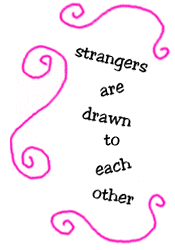 A few friends of mine recently boarded a jet plane to Great Britain. While they are away, frolicking around the countryside, I’ve been reading a bit about travel etiquette. Here’s a snippet from a book recently acquired.
A few friends of mine recently boarded a jet plane to Great Britain. While they are away, frolicking around the countryside, I’ve been reading a bit about travel etiquette. Here’s a snippet from a book recently acquired.
I’ve got the third printing of Etiquette in Public, published in 1924 and written by one of my favorite etiquette advisors, Lillian Eichler. Lillian’s advice is helpful, but I’m just wondering how those erring passengers managed to throw trash out of the plane in the first place.
1924: In Flight
![]() On most of the large planes, passangers are given glassine envelopes containing cotton and chewing gum. The experienced traveler pads his ears with the cotton and chews the gum to adjust his ears and throat to higher altitude. This is one occasion when chewing gum is not frowned upon as a vulgarity!
On most of the large planes, passangers are given glassine envelopes containing cotton and chewing gum. The experienced traveler pads his ears with the cotton and chews the gum to adjust his ears and throat to higher altitude. This is one occasion when chewing gum is not frowned upon as a vulgarity!
While the plane is aloft, passengers may get up and move about ~ if they like ~ but they must not venture into parts of the plane where it is forbidden to go. For example, the pilots’ compartment is strictly tabu to passengers. So also is the mail and express compartment, which, on many planes, is directly behind the passenger cabin. Radio instruments and controls are usually located inside the pilots’ compartment; but sometimes space is given inside the cabin to a special radio room. Passengers must not enter this room nor touch any of the instruments. . . .
Passengers should not drop paper, matches, or anything else out of a plane. Such things should be given to the cabin attendant to dispose of.
The cabin of a plane is so small, the passengers in such close proximity, that any attempt to observe social formalities is quite out of the question. Nobody waits to be introduced ~ everybody talks to everybody else ~ strangers are drawn to each other by the common thrill of flying (it’s still new enough to be thrilling to most of us!).
Occasionally, however, there will be a person of great prominence aboard a passenger plane. Unless that person has requested otherwise, the hostess may make his presence known to the others. In that case it is proper to ask for an introduction; strangers should not address the distinguished one until the hostess has made the necessary introduction.
It is not customary to tip airplane hostesses. However, if a hostess has been especially kind and attentive and the passenger wishes to show his appreciation, he may have a small, impersonal gift such as a box of candy or an interesting new book mailed to her after the trip is over.![]()
Source: Eichler, Lillian. Etiquette in Public. Hoboken, N.J.: R. B. Davis and Company, 1924.
~ p. 28-29 ~